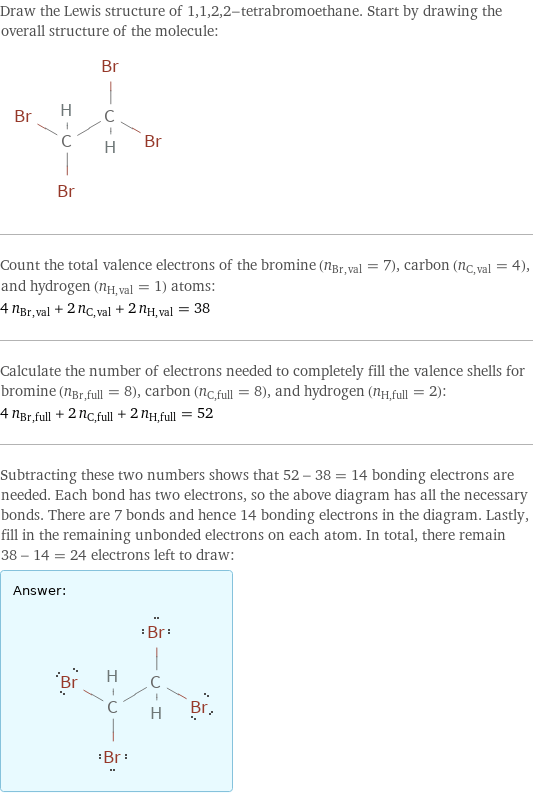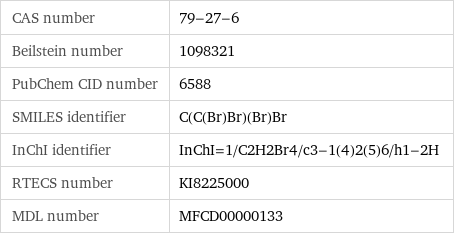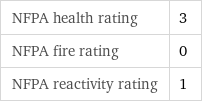Input interpretation

1, 1, 2, 2-tetrabromoethane
Chemical names and formulas

formula | Br_2CHCHBr_2 Hill formula | C_2H_2Br_4 name | 1, 1, 2, 2-tetrabromoethane alternate names | acetylene tetrabromide | ethane, 1, 1, 2, 2-tetrabromo- | Muthmann's liquid | sym-tetrabromoethane | tetrabromoacetylene mass fractions | Br (bromine) 92.5% | C (carbon) 6.95% | H (hydrogen) 0.583%
Lewis structure

Draw the Lewis structure of 1, 1, 2, 2-tetrabromoethane. Start by drawing the overall structure of the molecule: Count the total valence electrons of the bromine (n_Br, val = 7), carbon (n_C, val = 4), and hydrogen (n_H, val = 1) atoms: 4 n_Br, val + 2 n_C, val + 2 n_H, val = 38 Calculate the number of electrons needed to completely fill the valence shells for bromine (n_Br, full = 8), carbon (n_C, full = 8), and hydrogen (n_H, full = 2): 4 n_Br, full + 2 n_C, full + 2 n_H, full = 52 Subtracting these two numbers shows that 52 - 38 = 14 bonding electrons are needed. Each bond has two electrons, so the above diagram has all the necessary bonds. There are 7 bonds and hence 14 bonding electrons in the diagram. Lastly, fill in the remaining unbonded electrons on each atom. In total, there remain 38 - 14 = 24 electrons left to draw: Answer: | |
3D structure

3D structure
Basic properties

molar mass | 345.65 g/mol phase | liquid (at STP) melting point | 0 °C boiling point | 119 °C (measured at 2000 Pa) density | 2.967 g/cm^3
Units

Liquid properties (at STP)

density | 2.967 g/cm^3 vapor pressure | 0.09998 mmHg surface tension | 0.0471 N/m refractive index | 1.637
Units

Thermodynamic properties

specific heat capacity c_p | liquid | 0.4794 J/(g K) molar heat capacity c_p | liquid | 165.7 J/(mol K) molar heat of vaporization | 46.1 kJ/mol | specific heat of vaporization | 0.133 kJ/g | (at STP)
Chemical identifiers

CAS number | 79-27-6 Beilstein number | 1098321 PubChem CID number | 6588 SMILES identifier | C(C(Br)Br)(Br)Br InChI identifier | InChI=1/C2H2Br4/c3-1(4)2(5)6/h1-2H RTECS number | KI8225000 MDL number | MFCD00000133
NFPA label

NFPA label

NFPA health rating | 3 NFPA fire rating | 0 NFPA reactivity rating | 1
Safety properties

flash point | 97 °C autoignition point | 335 °C upper explosive limit | 24.5% (concentration in air)

DOT hazard class | 6.1 DOT numbers | 2504
Toxicity properties

threshold limit value | 1 ppmv

RTECS classes | tumorigen | mutagen | primary irritant